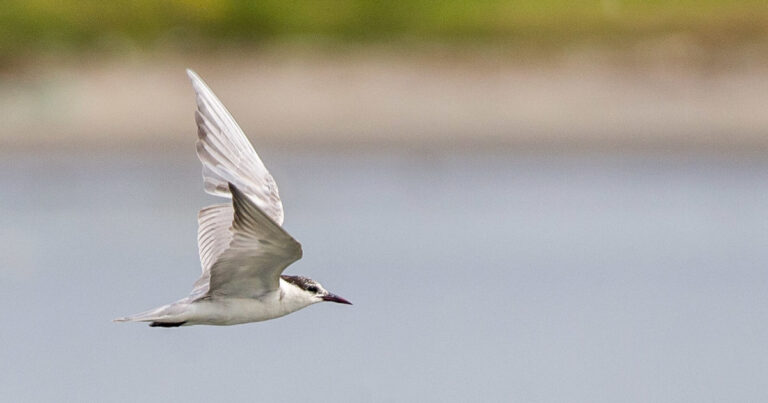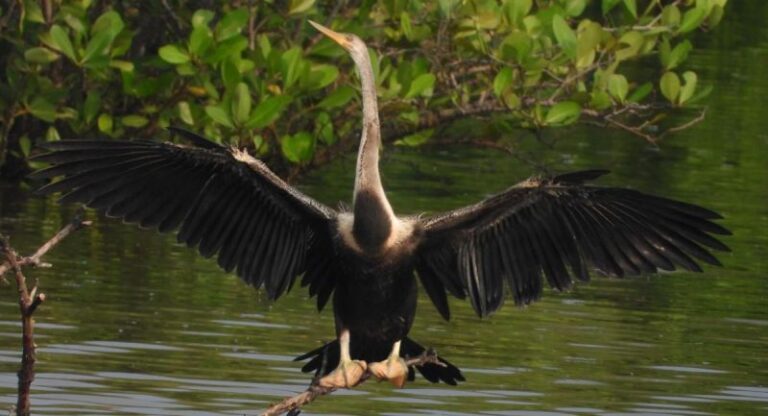28 Stunning Yellow Birds in Arizona (ID Guide With Photos)
Yellow Birds of Arizona offers a wide range of habitats that bird lovers appreciate. This is especially true for fans of bright yellow birds. With everything from the dazzling colors of orioles to the gentle shades of warblers, these birds are a delight to see in Arizona’s diverse environments. Check out this guide to 18 yellow birds you can find in Arizona. It also highlights their individual characteristics and behaviors.
List Of Yellow Birds That Live in Arizona!
In Arizona, there’s a whole array of yellow birds. They range from tiny to large. They’re charming and harmonize wonderfully. You can spot birds like Yellow Warbler, Western Tanager, and Western Meadowlark. These avian species contribute significantly to the natural ecosystem.
They consume a great amount of pests and aid flora development. They provide us with an indicator of the health of their natural habitat, which is crucial to other species and vegetation.
These yellow birds instruct us about Arizona’s natural environment. Their vibrant hues and melodic tunes beautify the wilderness. We must protect their habitats to ensure their longevity and happiness.
1. American Goldfinch (Spinus tristis)
The American Goldfinch is a delightful little bird known for its brilliant yellow plumage during the breeding season. Males are especially striking, with a contrasting black cap and black wings. They often flit gracefully through meadows and gardens, feeding primarily on seeds from thistles and sunflowers.

These birds undergo a dramatic molt in the fall, transitioning to an olive-brown plumage. They are social creatures, often gathering in large flocks during the non-breeding season. Known for their undulating flight, American Goldfinches add a lively touch to Arizona’s avian diversity.
Attributes:
- Length: 4.3–5.5 inches
- Wingspan: 7.5–8.7 inches
- Weight: 0.4–0.7 ounces
- Habitat: Open woodlands, meadows, and gardens
- Diet: Seeds, particularly from thistles and sunflowers
2. Yellow Warbler (Setophaga petechia)
Yellow Warblers are among the most vibrant songbirds in Arizona. Their entirely yellow bodies, accented with subtle reddish streaks on the breast, make them unmistakable. They are often spotted flitting through willow trees and along streams, hunting for insects.

Known for their melodious “sweet-sweet-sweet, I’m-so-sweet” song, Yellow Warblers are a favorite of birdwatchers. These birds are migratory, breeding in North America and wintering in Central and South America, making their presence in Arizona a seasonal delight.
Attributes:
- Length: 4.7–5.1 inches
- Wingspan: 6.3–7.9 inches
- Weight: 0.3–0.4 ounces
- Habitat: Riparian areas, woodlands, and shrubby fields
- Diet: Insects, berries, and seeds
3. Western Kingbird (Tyrannus verticalis)
The Western Kingbird is a bold and striking bird with a lemon-yellow belly and a gray head. This medium-sized bird is often seen perched on wires or fences, scanning for insects to catch mid-flight. Its tail, with white outer feathers, makes it easy to identify in flight.
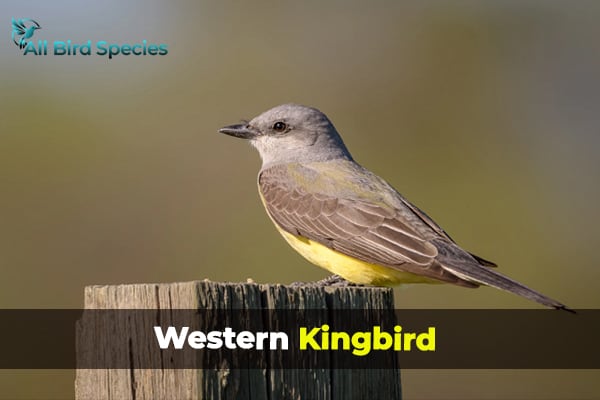
A skilled aerial hunter, the Western Kingbird is fearless in defending its territory. They often chase away larger birds, including hawks, making them a lively presence in Arizona’s open landscapes.
Attributes:
- Length: 7.9–9.4 inches
- Wingspan: 15.0–16.1 inches
- Weight: 1.3–1.6 ounces
- Habitat: Grasslands, deserts, and open woodlands
- Diet: Insects and occasionally fruits
4. Verdin (Auriparus flaviceps)
The Verdin is a small, desert-dwelling bird with a bright yellow head and a gray body. These agile birds are often seen darting among shrubs, searching for insects and nectar. They are known for constructing intricate nests, which they use as roosting shelters during harsh weather.

Despite their small size, Verdins are highly resilient and thrive in Arizona’s arid climate. They are a common sight in gardens and natural desert landscapes, where they feed on insects and flowers.
Attributes:
- Length: 4.5 inches
- Weight: 0.2–0.3 ounces
- Wingspan: 6.5 inches
- Habitat: Deserts and xeric scrublands
- Diet: Insects, nectar, and small fruits
5. Scott’s Oriole (Icterus parisorum)
Scott’s Oriole is a striking bird with a vibrant yellow body and contrasting black head and chest. Often found in the desert regions of Arizona, they are closely associated with yucca plants, where they forage and sometimes nest.
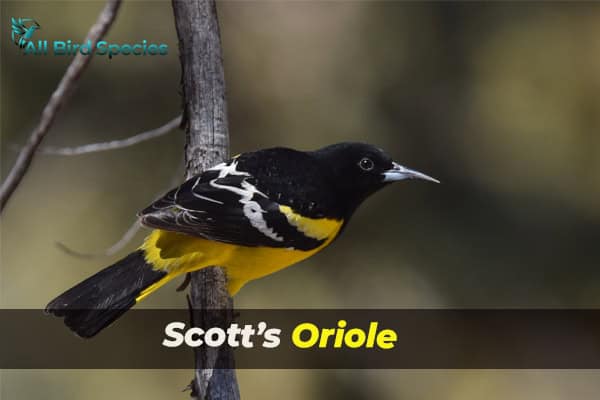
Their rich, melodious songs often echo through the canyons and hillsides, adding to the charm of the landscape. Scott’s Orioles are a treat for birdwatchers, especially during the breeding season when males display their brightest plumage.
Attributes:
- Length: 9.1 inches
- Wingspan: 12.6 inches
- Weight: 1.1–1.4 ounces
- Habitat: Deserts and arid woodlands
- Diet: Insects, fruits, and nectar
6. Lesser Goldfinch (Spinus psaltria)
The Lesser Goldfinch is a small bird with a cheerful personality, commonly seen in Arizona’s gardens and parks. Males display a striking yellow body with a black cap and greenish back. Their constant chatter and undulating flight are characteristic behaviors.
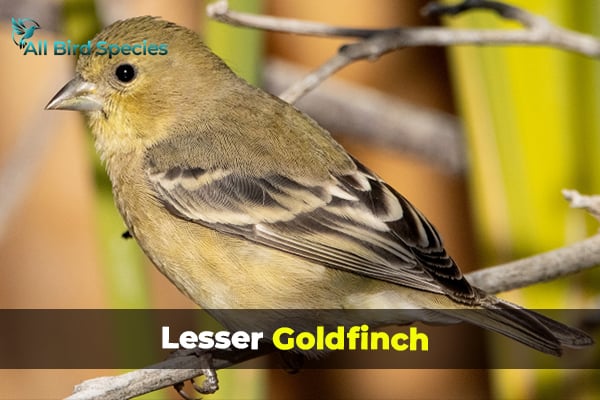
These adaptable birds thrive in a variety of habitats and are frequent visitors to bird feeders. Their diet consists mainly of seeds, especially from sunflowers, dandelions, and thistles, making them an essential part of the ecosystem.
Attributes:
- Length: 3.5–4.3 inches
- Wingspan: 7.9–8.7 inches
- Weight: 0.3–0.4 ounces
- Habitat: Urban areas, grasslands, and deserts
- Diet: Seeds and small insects
7. Yellow-Headed Blackbird (Xanthocephalus xanthocephalus)
With a stunning yellow head and jet-black body, the Yellow-Headed Blackbird is a sight to behold in Arizona’s wetlands. These birds often form large colonies during the breeding season, filling the air with their unique, raspy calls.

Yellow-Headed Blackbirds are primarily insectivorous during the breeding season, switching to seeds and grains in the winter. Their striking appearance and social behavior make them a favorite among birdwatchers.
Attributes:
- Length: 8.3–10.2 inches
- Wingspan: 16.5–17.3 inches
- Weight: 1.6–3.5 ounces
- Habitat: Wetlands, marshes, and grasslands
- Diet: Insects, seeds, and grains
8. Bullock’s Oriole (Icterus bullockii)
Bullock’s Oriole is a striking bird with vibrant orange-yellow plumage accented by black and white markings. Males are particularly colorful, while females and juveniles display a softer yellow hue. These orioles are frequent visitors to Arizona’s woodlands and suburban areas during the spring and summer months.

Known for their basket-like nests hanging from tree branches, Bullock’s Orioles are skilled weavers. They feed on a variety of foods, including nectar, fruit, and insects, contributing to pollination and pest control in their habitats.
Attributes:
- Length: 6.7–7.5 inches
- Wingspan: 12.0 inches
- Weight: 1.0–1.5 ounces
- Habitat: Open woodlands, orchards, and urban parks
- Diet: Nectar, insects, and fruits
9. Prothonotary Warbler (Protonotaria citrea)
The Prothonotary Warbler is a small, vibrant songbird with golden-yellow feathers and bluish-gray wings. Rare but sometimes seen in Arizona during migration, this bird is most commonly associated with wooded wetlands.
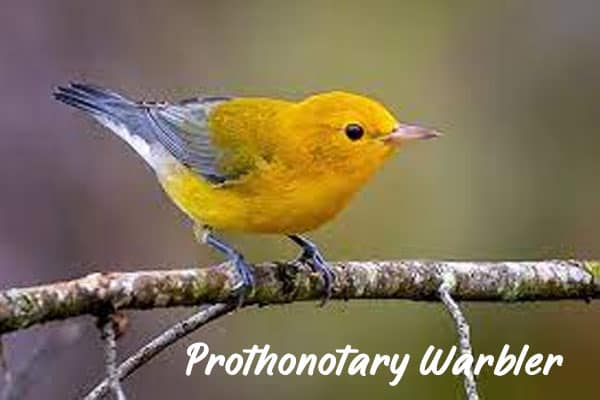
These warblers are cavity nesters, often choosing tree holes near water. Their diet consists of insects and aquatic invertebrates, making them integral to controlling pest populations in their habitats. Their sweet, ringing song is a highlight for birdwatchers lucky enough to spot them.
Attributes:
- Length: 5.1–5.5 inches
- Wingspan: 8.8–9.0 inches
- Weight: 0.4–0.5 ounces
- Habitat: Wetlands and riparian zones
- Diet: Insects, spiders, and snails
10. Cassin’s Kingbird (Tyrannus vociferans)
Cassin’s Kingbird is a robust bird with a yellow belly and gray head. Found in open landscapes, they are often seen perched on utility wires or trees, scanning for prey. Their white-tipped tail is a distinguishing feature when in flight.
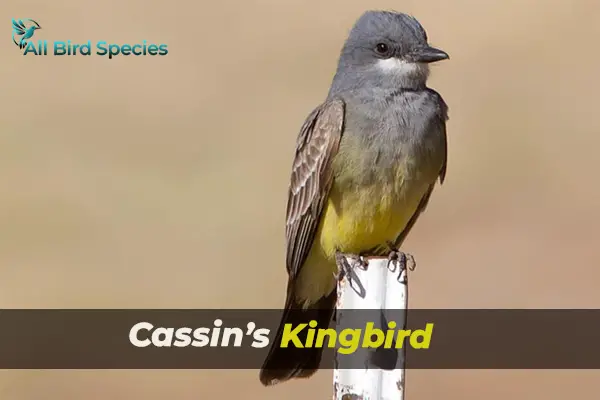
Known for their loud and persistent calls, Cassin’s Kingbirds are highly territorial during the breeding season. They feed predominantly on flying insects, catching them with impressive aerial agility.
Attributes:
- Length: 8.0–9.0 inches
- Wingspan: 15.5 inches
- Weight: 1.2–1.4 ounces
- Habitat: Grasslands, deserts, and open woodlands
- Diet: Flying insects
11. Yellow-Breasted Chat (Icteria virens)
The Yellow-Breasted Chat is an elusive and enigmatic bird with a bright yellow breast and olive-green back. Though shy and often hidden in dense shrubs, their distinctive whistles, clucks, and mimicry give away their presence.
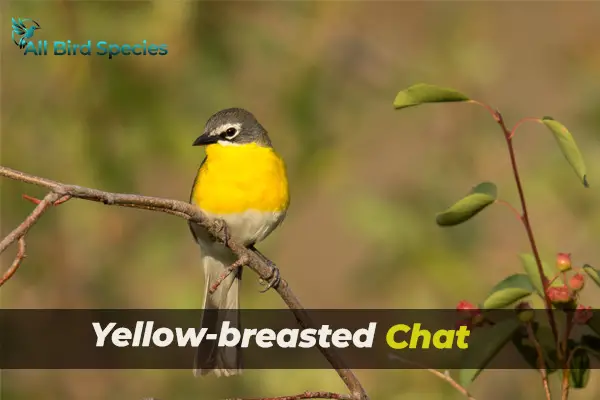
These birds are the largest members of the warbler family. They are territorial during the breeding season and often perform elaborate displays to attract mates. Their diet consists of insects and berries, making them valuable for natural pest control and seed dispersal.
Attributes:
- Length: 7.1 inches
- Wingspan: 9.8 inches
- Weight: 0.9–1.1 ounces
- Habitat: Dense shrubs and riparian thickets
- Diet: Insects and berries
12. Hooded Oriole (Icterus cucullatus)
Hooded Orioles Yellow Birds in Arizona are recognized for their striking orange-yellow bodies and black hoods. These birds are often spotted near palm trees, where they build their nests by weaving fibers into the fronds.

Hooded Orioles are nectar lovers and frequently visit hummingbird feeders, much to the delight of homeowners. They also feed on insects and fruits, playing a vital role in maintaining ecological balance.
Attributes:
- Length: 7.1–8.7 inches
- Wingspan: 9.0–10.5 inches
- Weight: 0.8–1.2 ounces
- Habitat: Suburban areas, palm groves, and deserts
- Diet: Nectar, insects, and fruits
Also Read: Clean High Windows with Bird Droppings?
13. Wilson’s Warbler (Cardellina pusilla)
The Wilson’s Warbler is a tiny bird with a bright yellow body and a distinctive black cap. These warblers are most commonly found in Arizona during migration, fluttering energetically through shrubs and trees in search of insects.

Wilson’s Warblers are known for their friendly and curious demeanor, often approaching observers closely. Their constant motion and melodic songs make them a joy to watch during spring and fall migration.
Attributes:
- Length: 4.3–5.1 inches
- Wingspan: 5.9–7.5 inches
- Weight: 0.2–0.4 ounces
- Habitat: Forest edges, riparian areas, and shrubby fields
- Diet: Insects and small berries
14. Common Yellowthroat (Geothlypis trichas)
Common Yellowthroats are small Yellow Birds in Arizona, secretive birds with a vibrant yellow body and a distinctive black facial mask (in males). They inhabit marshy areas, reed beds, and wetlands, often remaining hidden in dense vegetation.

Their sharp “witchety-witchety” call is a common sound in their habitat. These warblers play a crucial role in controlling insect populations, as their diet consists mainly of insects and larvae.
Attributes:
- Length: 4.3–5.1 inches
- Wingspan: 5.9–7.5 inches
- Weight: 0.3–0.4 ounces
- Habitat: Wetlands, marshes, and dense shrubbery
- Diet: Insects and spiders
Must Read: Do Birds Eat Ants
15. Pine Warbler (Setophaga pinus)
The Pine Warbler is a bright yellow songbird with olive-green back feathers. These birds are often associated with pine trees, where they forage for insects and seeds. They are less migratory than other warblers, sometimes staying in Arizona year-round.
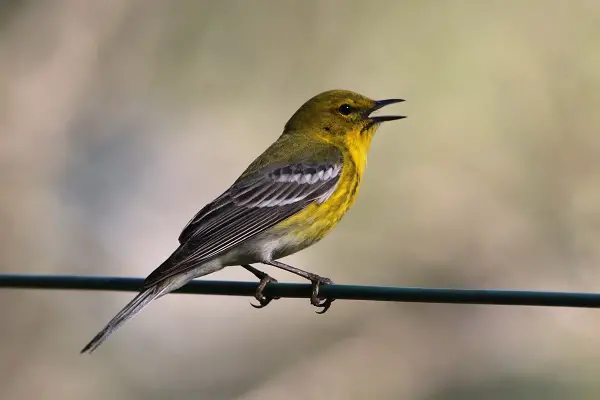
Pine Warblers are versatile feeders, adapting their diet to include berries and suet in the colder months. Their melodious trill is a welcome addition to any birdwatcher’s experience.
Attributes:
- Length: 5.1–5.5 inches
- Wingspan: 7.5–9.1 inches
- Weight: 0.3–0.5 ounces
- Habitat: Pine forests and mixed woodlands
- Diet: Insects, seeds, and berries
16. Orange-crowned warbler (Leiothlypis celata)
The Orange-Crowned Warbler is a subtle yet charming bird with muted yellow-green plumage. Its name comes from the barely visible orange crown, usually hidden under its feathers. They are most commonly seen during migration or winter in Arizona.
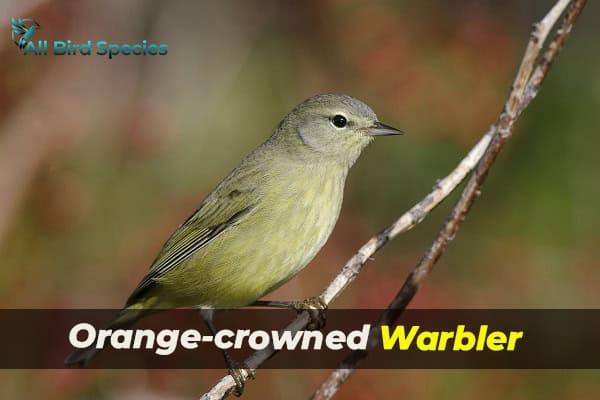
These warblers are adaptable and thrive in a variety of habitats, from gardens to deserts. They feed on insects and nectar, occasionally visiting hummingbird feeders.
Attributes:
- Length: 4.3–5.1 inches
- Wingspan: 7.1–7.5 inches
- Weight: 0.3–0.4 ounces
- Habitat: Deserts, woodlands, and urban areas
- Diet: Insects, nectar, and berries
17. Palm Warbler (Setophaga palmarum)
The Palm Warbler is a ground-foraging warbler with a mix of olive-green and yellow plumage. These birds are commonly seen wagging their tails as they hop along the ground in search of insects.
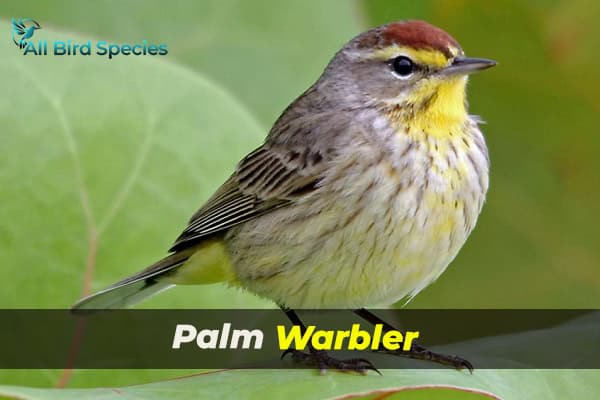
Palm Warblers are migratory, passing through Arizona during their seasonal journeys. Their striking coloration and active foraging behavior make them a favorite among bird enthusiasts.
Attributes:
- Length: 4.7–5.5 inches
- Wingspan: 7.9–8.7 inches
- Weight: 0.3–0.5 ounces
- Habitat: Grasslands, wetlands, and open woodlands
- Diet: Insects and seeds
18. Evening Grosbeak (Coccothraustes vespertinus)
The Evening Grosbeak is a large, sturdy bird with a bold yellow body and black-and-white wings. These birds are occasional visitors to Arizona, especially during the winter months when food sources are scarce in their northern breeding grounds.
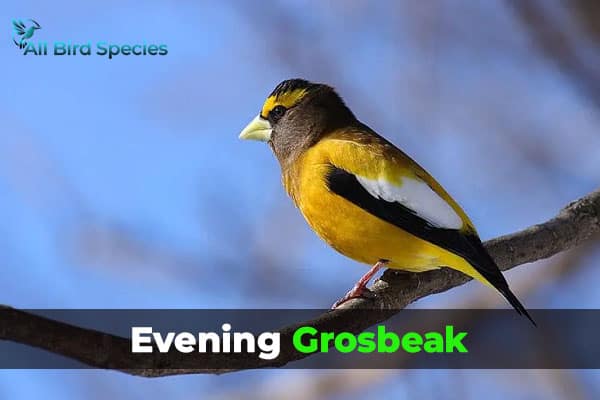
Evening Grosbeaks are often seen at bird feeders, where they feast on seeds and nuts. Their robust beak is perfect for cracking open hard shells, and their vibrant plumage adds a splash of color to winter landscapes.
Attributes:
- Length: 6.3–7.1 inches
- Wingspan: 11.8–14.2 inches
- Weight: 1.9–2.6 ounces
- Habitat: Forests, gardens, and suburban areas
- Diet: Seeds, nuts, and fruits
19. Ash-throated Flycatcher (Myiarchus cinerascens)
The Ash-throated Flycatcher is a distinctive bird with a pale yellow belly and an ash-colored throat, which contrasts with its darker, grayish-brown back. Known for its large, broad wings and sturdy build, this bird is frequently seen perched on high branches in Arizona’s dry forests and shrublands.
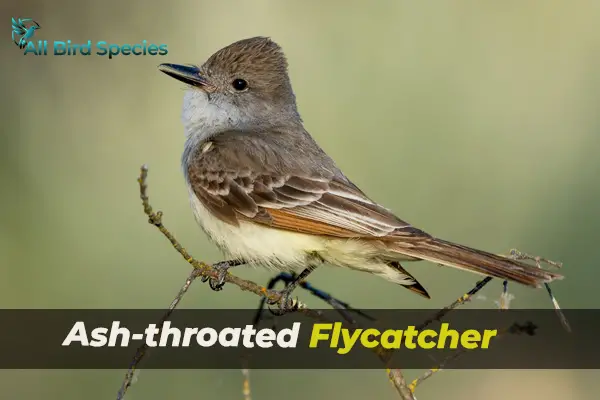
Ash-throated Flycatchers are primarily insectivorous, using their sharp beaks to snatch insects from the air or off tree branches. Their loud “pee-er” call can often be heard in the quieter parts of Arizona’s wild areas.
Attributes:
- Length: 7.5–8.3 inches
- Wingspan: 13.0 inches
- Weight: 0.9–1.0 ounces
- Habitat: Arid woodlands and desert scrub
- Diet: Insects and small fruits
20. Western Meadowlark (Sturnella neglecta)
Western Meadowlarks are recognized for their bright yellow underparts and rich black markings on their chests. These birds are most commonly found in Arizona’s grasslands and open fields. Known for their beautiful, melodic song, the Western Meadowlark is often seen perched on fence posts or tall grasses during the breeding season.
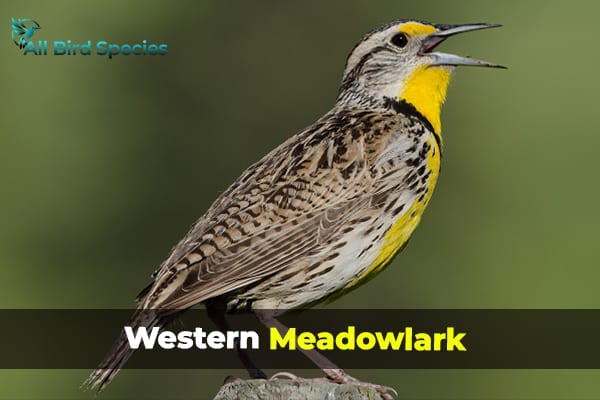
They are ground foragers, searching for insects, seeds, and berries. Their distinct song, often described as a fluty whistle, is a key feature in identifying them.
Attributes:
- Length: 9.1–11.0 inches
- Wingspan: 13.8–15.7 inches
- Weight: 3.0–4.5 ounces
- Habitat: Grasslands, prairies, and open fields
- Diet: Seeds, insects, and small fruits
21. Yellow-Tailed Oriole (Icterus mesomelas)
The Yellow-Tailed Oriole is a striking bird with a mix of bright yellow and black, making it easy to identify. These orioles are commonly found in Arizona’s riparian habitats, where they build their elaborate, hanging nests in trees.

With a diet consisting of fruits, nectar, and insects, the Yellow-Tailed Oriole plays an important role in pollination. They are often seen perched in trees, using their sharp, hooked bills to extract food from flowers or fruits.
Attributes:
- Length: 9.0–10.0 inches
- Wingspan: 13.0–14.0 inches
- Weight: 1.2–1.6 ounces
- Habitat: Riparian areas, open woodlands, and gardens
- Diet: Nectar, insects, and fruits
22. Northern Parula (Setophaga americana)
The Northern Parula Yellow Birds in Arizona is a small, bright bird with a yellow-green body and a distinctive blue-green back. This warbler is often seen in Arizona during migration, particularly in areas with a mix of trees and dense undergrowth.
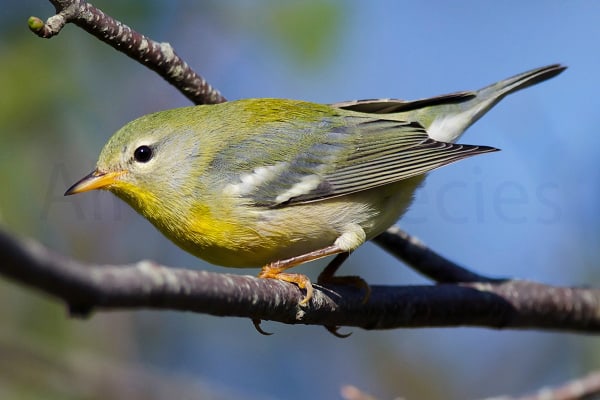
Northern Parulas feed on insects and spiders, using their agility to hunt in the dense foliage. Despite their small size, they have a powerful, sweet song that can be heard from the treetops.
Attributes:
- Length: 4.3–4.7 inches
- Wingspan: 7.1 inches
- Weight: 0.2–0.3 ounces
- Habitat: Forests, woodlands, and urban parks
- Diet: Insects and spiders
23. Orange Bishop (Euplectes franciscanus)
The Orange Bishop is a striking bird with brilliant orange-yellow feathers, especially on its head and chest. Found in Arizona’s wetlands and grasslands, these birds are known for their intricate nest-building, often woven in reed beds or tall grasses.
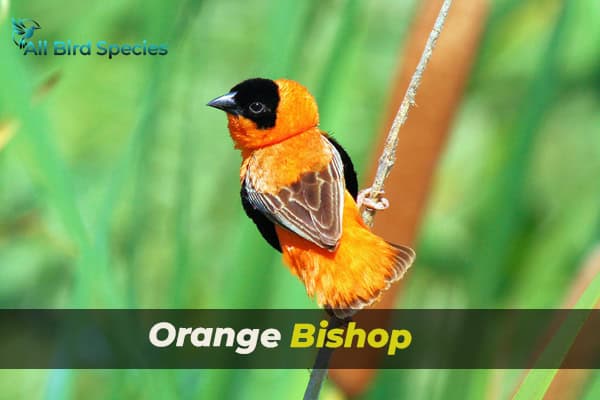
Despite being part of the weaver family, Orange Bishops are aggressive during the breeding season. They feed primarily on seeds, including grasses and grains, and can sometimes be found at bird feeders.
Attributes:
- Length: 5.5 inches
- Wingspan: 8.0 inches
- Weight: 0.7 ounces
- Habitat: Wetlands, grasslands, and reed beds
- Diet: Seeds and small grains
24. Yellow-fronted canary (Crithagra mozambica)
The Yellow-Fronted Canary Yellow Birds in Arizona, though not a true native of Arizona, can occasionally be seen in the state. This bird is known for its bright yellow head and chest, which contrast beautifully with its olive-green wings and back. They thrive in areas with abundant seed sources.

These canaries are social birds, often found in flocks, and they build their nests in shrubs or trees. Their song is a soft, sweet melody, and they are active foragers, feeding on seeds, grasses, and sometimes insects.
Attributes:
- Length: 4.5–5.0 inches
- Wingspan: 7.5–8.0 inches
- Weight: 0.4–0.5 ounces
- Habitat: Open fields, gardens, and suburban areas
- Diet: Seeds, grasses, and small insects
25. Black-vented Oriole (Icterus wagleri)
Black-vented Orioles Yellow Birds of Arizona are striking birds with a mix of bright yellow plumage, contrasted by black wings and tail feathers. These orioles are typically found in Arizona’s riparian zones, where they nest in the upper branches of tall trees.
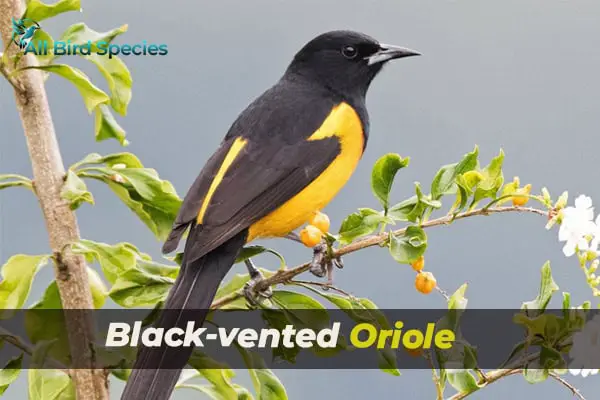
They feed primarily on fruits, nectar, and insects, and they have a preference for tropical or subtropical plants. Their melodious song is often heard in the mornings, adding a charming element to their habitat.
Attributes:
- Length: 9.5–10.0 inches
- Wingspan: 13.0 inches
- Weight: 1.1–1.5 ounces
- Habitat: Riparian areas and dense forests
- Diet: Nectar, fruits, and insects
26. Yellow-Crowned Night Heron (Nyctanassa violacea)
The Yellow-Crowned Night Heron is a fascinating species with a distinctive yellow crown and blackish-gray body. They are most active at dusk or dawn, foraging along the water’s edge for small fish, crustaceans, and amphibians.

These herons are found in Arizona’s wetlands, especially near ponds and streams. While they are not strictly yellow throughout their bodies, their striking crown of yellow feathers is a notable feature.
Attributes:
- Length: 22.0–27.0 inches
- Wingspan: 43.0 inches
- Weight: 16.0–24.0 ounces
- Habitat: Wetlands, coastal areas, and riverbanks
- Diet: Small fish, crustaceans, and amphibians
27. Golden-cheeked Warbler (Setophaga chrysoparia)
The Golden-cheeked Warbler is a small, endangered species with a distinctive yellow cheek patch and black markings on its head. Found primarily in the woodlands of central Texas, it occasionally migrates through Arizona, especially during spring and fall.
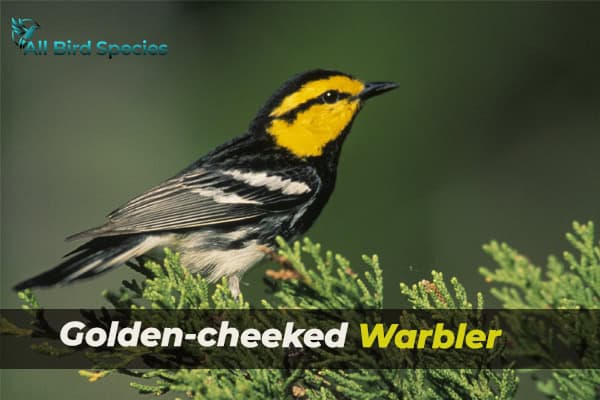
This warbler is a cavity nester, relying on mature trees for nesting sites. Their diet consists of insects, and they are particularly known for their ability to forage in the canopy, searching for caterpillars, moths, and other insects.
Attributes:
- Length: 4.5–5.1 inches
- Wingspan: 7.5–8.0 inches
- Weight: 0.3 ounces
- Habitat: Mature forests and woodlands
- Diet: Insects and larvae
More Read: Red Birds in South Carolina
28. Golden Eagle (Aquila chrysaetos)
The Golden Eagle is a majestic bird of prey that occasionally appears in Arizona, where it hunts in open landscapes and mountainous areas. While not entirely yellow, its golden-brown plumage on the back and neck area gives it the name.

Golden Eagles are known for their incredible hunting skills. They prey on mammals, birds, and reptiles, using their powerful talons to capture prey in flight. Their wingspan can span up to 7.5 feet, making them a breathtaking sight to behold.
Attributes:
- Length: 27.0–33.0 inches
- Wingspan: 72.0–90.0 inches
- Weight: 3.5–7.0 kilograms
- Habitat: Mountainous regions and open deserts
- Diet: Mammals, birds, and reptiles
Final Thoughts
Arizona is a haven for many eye-catching yellow birds. These birds, each distinctive, have a crucial part in the ecosystem. The state’s various surroundings, like the deserts, wetlands, and forests, are home to the radiant Yellow Warbler and the mighty Golden Eagle. Shining brightly, their colors and activities highlight Arizona’s biodiversity and contribute to conservation work. So, bird enthusiasts witness the mesmerizing beauty and significance of wildlife in Arizona.





